2 Reasons Why Your Schefflera Leaves Are Sticky!
Schefflera are popular houseplants known for their beautiful variegated leaves. But, it is shocking to see those gorgeous leaves diminishing colors and getting sticky.
The major reason behind sticky leaves in Schefflera is pest infestations. Pests suck out sap from the plant and, while feeding, leave behind a liquid substance called honeydew. Another reason for sticky leaves can be guttation, where the plant secretes excess water through its leaves.
It is important to identify the reasons behind sticky leaves in Schefflera and then fix them accordingly. This article will help you understand why your umbrella plant is sticky and how you can fix this issue.

Please note: Simplify Plants is reader-supported. Some links in the post are affiliate links and I get a commission from purchases made through links in the post.
What makes Schefflera sticky?
If you discover that your Schefflera looks odd and sticky, it is probably because your plant has a pest infestation.
The sticky substance is excreted by the pests and insects when they feed on the sap.
It is a nutrient-rich fluid and runs in different plant parts like branches, leaves, and stems.
If you find that your plant’s leaves are sticky due to a pest attack, then without wasting any time, you need to take immediate action to save your plant.
Let us discuss this problem in detail to save your plant quickly without causing further damage.
Pest infestations
Pests are the main reason behind the sticky leaves on your Schefflera.
They feed on the plant and suck its sap from the foliage, leaving a sticky liquid substance called honeydew.
The sap is a fluid rich in nutrients and sugar consumed by pests in a very large amount.
As pests do not take in the sap completely, they excrete excess sugar as honeydew.
As honeydew contains sugar, it makes the leaves sticky in texture.
Common pests that can attack Schefflera are aphids, mealybugs, spider mites, whiteflies, scales, etc.
If they feed on the plant continuously, it can become weak and even die.
Honeydew attracts various ants and insects to the plant.
This produces fungi and mold on the leaves, making the plant extremely unhealthy.
You will see brown spots on the leaves due to pest infestations.
As soon as you notice honeydew, it is necessary to clean the leaves without wasting any time to prevent future infestations.
How to identify which pest has attacked your Schefflera?

Signs will help you to find out which pests have attacked your plant.
Let us discuss each pest in detail:
Aphids: Aphids are tiny soft-bodied pests with long narrow mouthparts which they use to pierce leaves, stems, and other parts of the plants.
They mostly stay on the undersides of the leaves.
The plant can have stunted growth, curly, wilted, and damaged leaves if aphids attack.
Also, honeydew produced by aphids can encourage the growth of various mold and fungi like powdery mildew.
Mealybugs: They are small white, soft-bodied insects that feed on the leaves and stems using long piercing mouthparts.
They appear as white, cottony wax pieces on the plant.
These pests can cause faded yellow foliage, sticky leaves, and falling leaves.
Honeydew excreted by mealybug causes stickiness to the leaves, which can also encourage the development of black sooty mold.
Spider mites: Spider mites mostly hide on the underside of the leaves and form a web-like structure on the leaves if infected.
You cannot see webs through your naked eyes, but if you feel that the bottom of the leaves is sticky, then it might be because of spider mites.
As a symptom, you will see yellow or white speckles on the upper side of the leaves.
Whiteflies: Whiteflies also feed on the underside of the leaves.
They are tiny soft-bodied moths and feed on the plant’s sap, leaving behind a sticky substance called honeydew.
Because of the continuous excretion of honeydew, the plant can also get affected by a fungal disease called sooty mold.
Scales: Scales are small insects that feed on the plants using their hair-like mouthparts.
This pest feeds on the plant’s tissue and sucks out phloem sap, weakening the plant.
If scales attack your Schefflera, you will see small yellow or brown bumps on the stems and leaves.
Also, the plant can have stunted growth and yellow, sticky, shiny leaves.
How to treat pest infestation on Schefflera?
If you want to get rid of honeydew, clean the plant first and remove the pests as soon as possible.
Honeydew will keep attracting the other additional insects, so it is necessary to clean them if you don’t want any further damage and stickiness in your Schefflera plant.
Let us discuss the ways to get rid of different kinds of pests.
Treatment for mealybugs

As soon as you notice fuzzy powdery-like substance or white dots on the leaves, it is because of mealybugs.
To treat them, isolate the Schefflera in a specific area and examine it.
If the infestation is very serious, treating your plant under such conditions is difficult.
Let us discuss how you can treat mealybugs:
- If the infestation is light, you can simply prune the infected leaves to get rid of them.
- If it is serious, wet the cotton swabs by dipping them in diluted isopropyl alcohol and then remove all the mealybugs visible with the naked eyes. Make sure to rub the infected areas gently.
- You can also use a wet paper towel instead of cotton swabs.
- Do not excessively water or fertilize the plant as moist texture and high nitrogen content can attract more mealybugs.
- You can release lacewings and ladybeetles to eliminate mealybugs with a natural method. They are excellent predators.
- You can also use Neem oil to get rid of mealybugs. It’s a plant-friendly oil, and with its powerful smell and purifying properties, it helps to keep the pests away.
- If the infestation is serious, you should make a solution by adding one liter of water, one cup of isopropyl alcohol, and 2-3 drops of dish wash soap. Mix the solution properly and then apply it to all parts using a spray bottle.
- As a last option, you can use pesticides only after reading the instructions on the label. It has few side effects, so be careful with that.
- Always clean your plant leaves with leaf shine to keep them far away from new infections.
Treatment for aphids
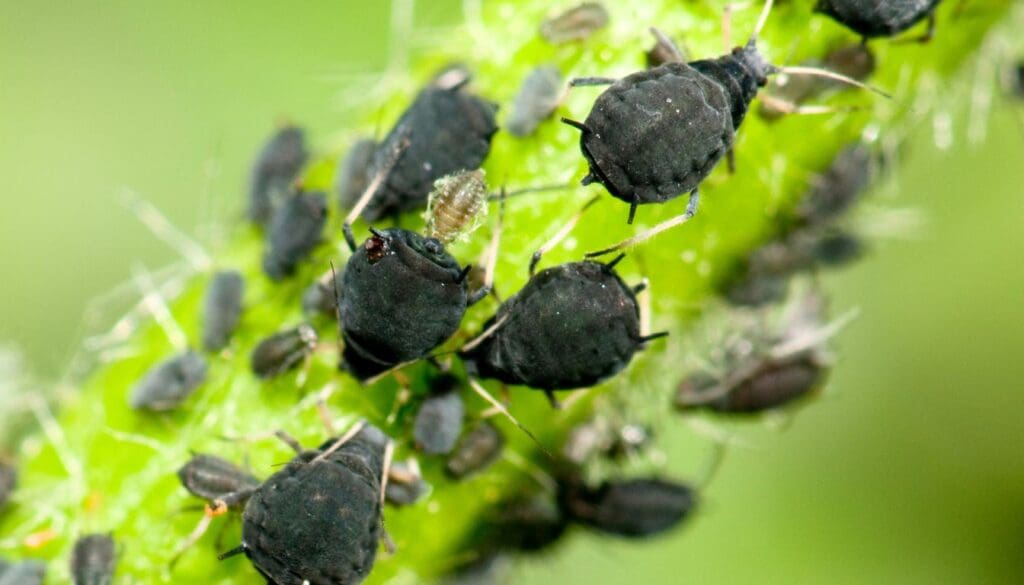
Let us discuss how you can get rid of aphids:
- To remove aphids, you can handpick them after wearing gloves and put them into a container filled with water and soap.
- After handpicking, wash the entire plant with a powerful stream of water and then keep it in a bright location to let the plant dry.
- You can also purchase natural predators like ladybeetles to feed on pests.
- You can also get rid of them by making a solution of warm water and a few drops of detergent soap, then spraying it on the whole plant. After this, rub the infected parts with a wet cotton ball dipped in a solution.
- If the infestation is dense, prepare a mixture by adding 1 teaspoon of Neem oil, 1 teaspoon of dish soap, and 1 quart of water. Pour the solution into a spray bottle and wash the entire plant. To completely get rid of aphids, continue spraying this solution for a few weeks.
Treatment for spider mites
Spider mites are difficult to treat as you can’t spot them easily.
You can treat them by following the steps given below:
- To get rid of the pests, give a good wash to your Schefflera with a strong stream of water.
- You can use Neem oil or horticulture oil. It is a natural insecticide you can use on houseplants because of its non-toxic nature. Make a mixture of Neem oil or horticulture oil with water, and use a spray bottle to apply it to your plant.
- You can also apply another solution by mixing 1 liter of water, 2 teaspoons of Neem oil, and 1 teaspoon of rubbing alcohol or detergent soap. This solution is very effective when the infestation is very serious.
- After spraying, prune all the infected leaves and clean the remaining leaves with cotton swabs or a paper towel. Make sure to wipe the leaves carefully without damaging them.
Treatment for scales
You can get rid of scales by following the steps given here:
- First, prune all the affected leaves and branches so they will not spread further to the entire plant.
- Use forceps or toothpicks to remove the visible pests.
- If the infestation is light, take 4-5 cups of warm water and mix it with one tablespoon of detergent soap. Then bring cotton balls, dip them into the solution, and wipe off the infected parts.
- You can also use rubbing alcohol to get rid of scales. The best way to use this solution is to use cotton balls or swabs to wipe off the infected parts. Otherwise, you can make a mixture by adding 1 part of rubbing alcohol with 6-7 parts of water and then spray it on the infected parts directly.
- Another way you can apply is insecticidal soap spray.
- You can mix horticulture, Neem, or any other natural oil with water and detergent soap and then spray the solution on the whole plant. The oil will help suffocate the pests and eventually kill them.
Treatment for whiteflies
In the case of whiteflies, try to treat the plant in the morning or evening as they lack energy during that time.
Let us discuss the treatment for whiteflies:
- Spray the entire plant with water to remove the whiteflies. Try to pay more attention to the bottom of the leaves as they hide in those areas. After that, keep the plant far away from the other houseplants so it will not infect them.
- You can use yellow sticky traps for controlling whiteflies. It is the most effective method as the pests easily get attracted to yellow sticky traps, and once they are captured, it will destroy them instantly.
- You can also use a vacuum to clean pests. Set your vacuum cleaner in a low suction mode, and then vacuum the undersides of the leaves slowly.
- Whiteflies can also be destroyed by insecticidal soap. You can spray the solution to the infected area early in the morning or evening.
- You can also make a solution by adding vinegar and water equally. Then, wipe off the leaves using a paper towel or cotton swabs. If the infection is heavy, you can spray this solution to the whole plant too.
- Neem oil is also a naturally effective way to get rid of whiteflies.
- After curing, always look for whiteflies on the undersides of the leaves. If you notice new eggs or larvae on the leaves, immediately prune them off.
Also read: Schefflera Pest Problems: Common Pests & Diseases+How To Fix
Guttation in Schefflera
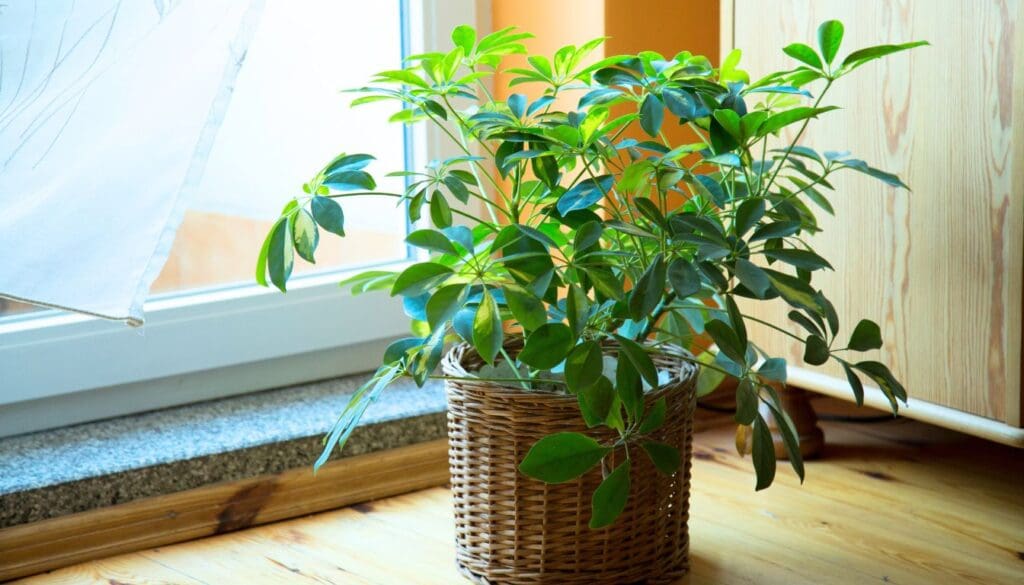
Sometimes, you can see your plant releasing a liquid that makes the leaves sticky.
When your plant becomes oversaturated, it fails to absorb the excess water, so it starts to release excess moisture through leaves by the process of transpiration.
While the plant releases excess water, they also release the sap along with it, making the leaves sticky.
This process is called guttation.
If you notice no pests have attacked your Schefflera but still see shiny sap crystals on the leaves, it’s because of guttation.
Guttation is not harmful, but it makes the leaves sticky.
So, it is necessary to clean your plant.
Lack of cleaning can attract pests to your Schefflera and become a threat.
Is guttation harmful?
As guttation is natural, it is not harmful to your plant.
It is quite normal to see your plant releasing excess moisture.
But in case the guttation is too much, then it can put your plant at risk.
Losing too much moisture and nutrients can damage your plant, which can cause white or burn spots on the foliage.
To avoid extreme guttation:
- Avoid overwatering your plant. Overwatering can automatically increase the guttation process and can cause extreme moisture loss.
- Avoid overfertilizing. Due to this mistake, extra minerals start to set down on the leaves, which can cause burning on the tips or edges.
- Also, avoid using tap water as it already contains a lot of excess minerals, and the guttation process can increase.
How will you clean the sticky leaves of the Schefflera plant?
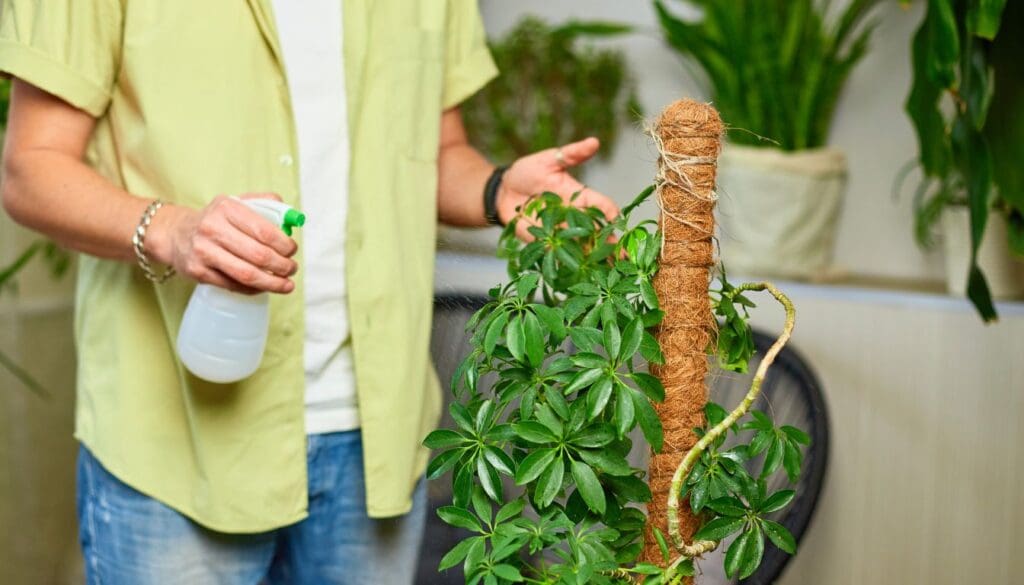
Honeydew is a sticky substance released by pests when they feed on the sap.
You need to clean the leaves to protect the plant from this sticky substance.
Otherwise, it can attract ants and other insects.
Let us discuss the steps that will help you clean your Schefflera plant’s leaves.
- Make a mixture by adding 1 tablespoon of detergent to 1 liter of water.
- Then, take cotton swabs and then dip them in the solution.
- With cotton swabs, gently wipe off the sticky honeydew from the foliage.
- You can also use rubbing alcohol instead of detergent soap.
How to prevent stickiness on Schefflera?
Here are some steps to help prevent stickiness on your umbrella plant.
- Provide proper bright indirect sunlight and good ventilation to the plant. Low light can easily increase the chances of pest infestations.
- Never overwater or overfertilize the plant as it can increase the chances of pest attack, and it can also increase the guttation process.
- Use a pot slightly bigger than the plant and a potting mix that is well-draining and well-aerated.
- Always look after the plant from time to time and check for any signs of pests.
- Always prune and wash the entire plant on time. You can spray Neem or horticulture oil every 2-3 weeks to prevent pest infestations.
- You can also use detergent soap and water to spray the plants once a week.
- Clean the leaves frequently with a wet paper towel or cotton swabs to prevent the leaves from dust and stickiness.
Reference: Wikipedia, Sciencedirect, Britannica, American Society for Horticultural Science, Schefflera taxonomic history.
Recommended Garden Supplies
| Product Image | Our Recommended Gardening Supplies | Check Offers! |
|---|---|---|
Top Top
Top
Top
Top
Top
Top
Top
Top | rePotme Houseplant and Tropical Classic Potting Soil Mix | Check Offer On Amazon |
 Top
Top
Top
Top
Top
Top
Top
Top | Espoma Organic Indoor Plant Food | Check Offer On Amazon |
 Top
Top
Top
Top
Top
Top
Top
Top | GooingTop LED Grow Light 6000K Full Spectrum Clip Plant Growing Lamp | Check Offer On Amazon |
 Top
Top
Top
Top
Top
Top
Top
Top | Soil Moisture Meter | Check Offer On Amazon |
 Top
Top
Top
Top
Top
Top
Top
Top | Govee Hygrometer Thermometer, Bluetooth Enabled! | Check Offer On Amazon |
 Top
Top | LEVOIT Humidifiers for Large Room(Best For Plants) | Check Offer On Amazon |
 Top
Top
Top
Top
Top
Top
Top
Top | Upgraded DIY Automatic Drip Irrigation Kit, 15 Potted Houseplants Support | Check Offer On Amazon |
 Top
Top
Top
Top
Top
Top
Top
Top | Stainless Steel Heavy Duty Gardening Tool Set | Check Offer On Amazon |
 Top
Top
Top
Top
Top
Top
Top
Top | Bonide Insecticidal Soap | Check Offer On Amazon |
 Top
Top
Top
Top
Top
Top
Top
Top | Bonide 32 oz Spray Neem Oil for Organic Gardening | Check Offer On Amazon |
 Top
Top
Top
Top
Top
Top
Top
Top | Garden Safe Fungicide | Check Offer On Amazon |

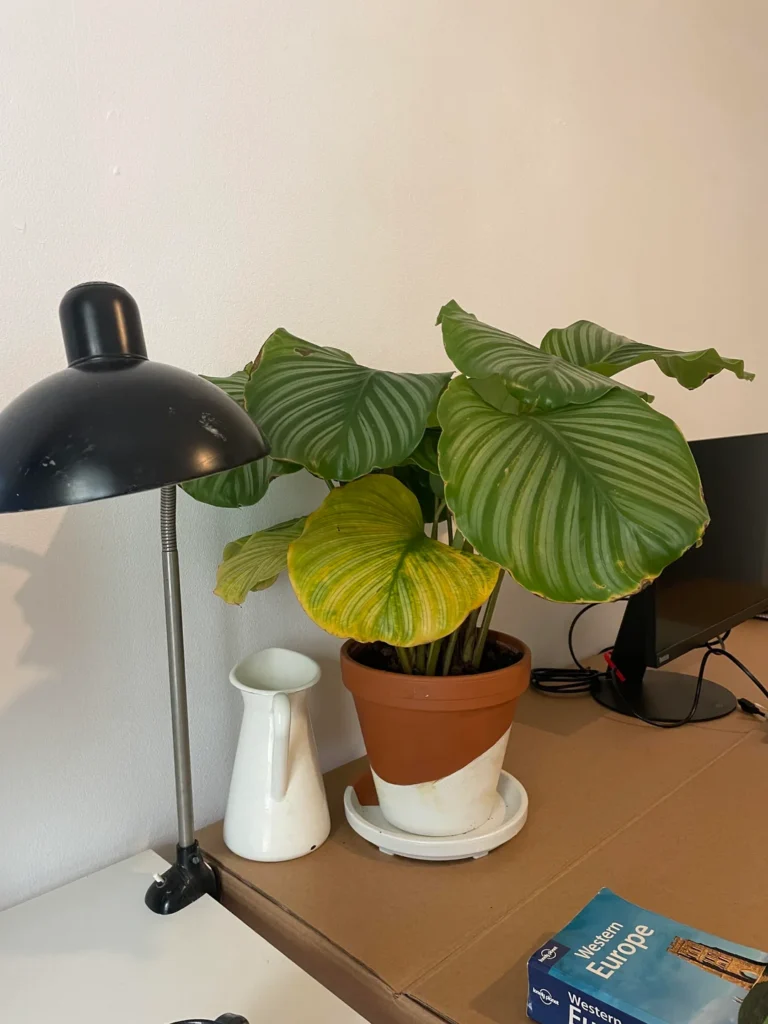


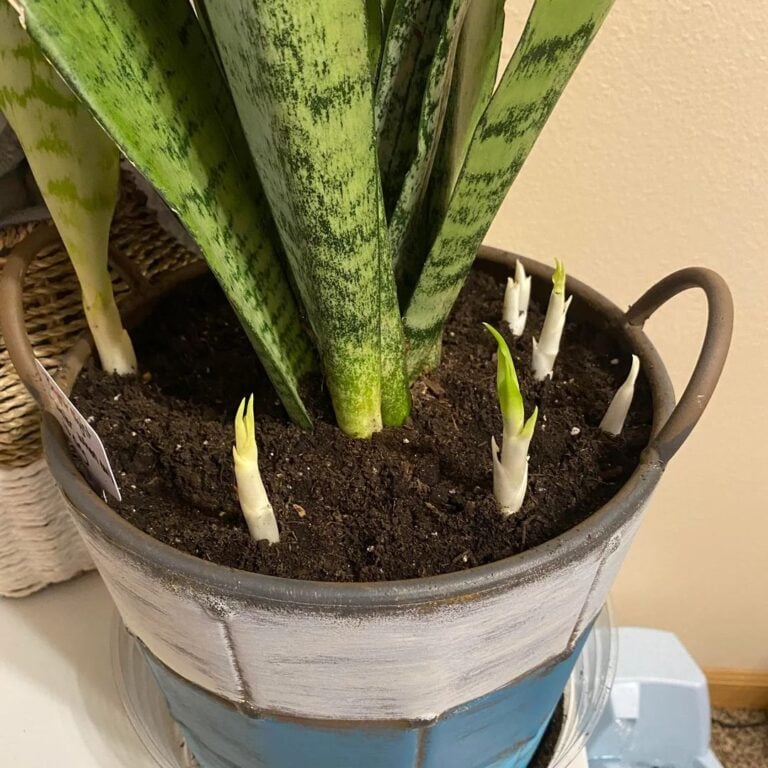

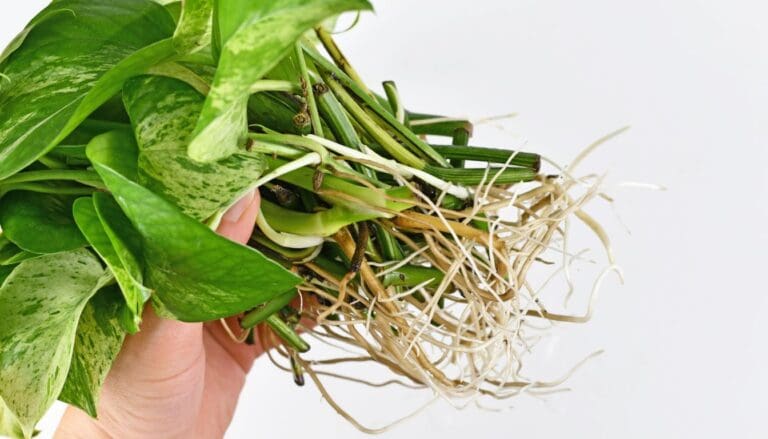
Thanks so much for such great advice.
Question, I’m using isopropyl vs. rubbing alcohol (adjusting the water up)
How many times a week do I spay my schefflera? Once, less frequently?
Thanks!
denise
Hey,
thanks for stopping by.
Both rubbing and isopropyl alcohol will work.
You can try this once or twice a week depending on the pests situation.